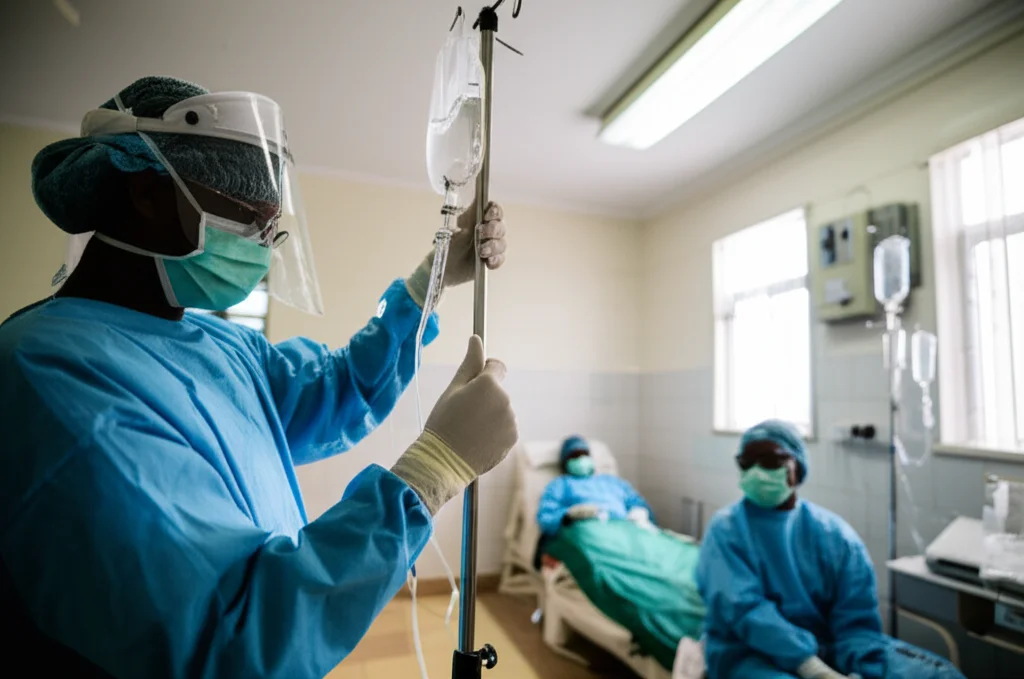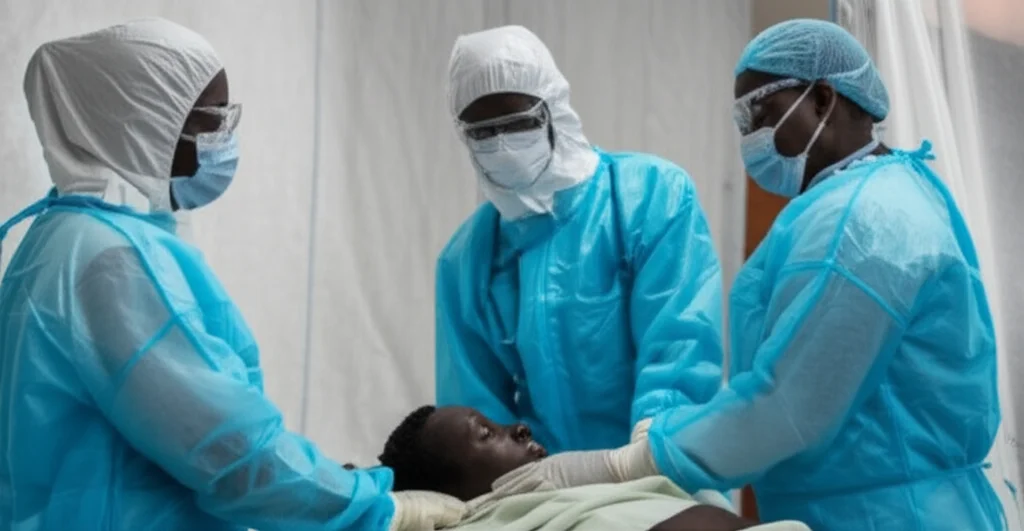Ebola’s New Hope: How Key Therapies Boost Survival in the DRC
Hey everyone, let’s talk about something serious but also, thankfully, something where we’re seeing real progress: the fight against Ebola. We’ve seen these outbreaks hit hard, especially in places like the Democratic Republic of Congo (DRC), causing immense suffering and having really high fatality rates. For years, the main approach was what we call “standard supportive care” – basically, doing everything we could to keep patients hydrated, manage their symptoms, and give their bodies the best chance to fight the virus.
But scientists haven’t stopped looking for better weapons. Over time, several promising treatments, particularly those based on monoclonal antibodies, have emerged. You might have heard names like MAb114, REGN-EB3, Remdesivir, and ZMapp. These have been tested and shown promise, but a big question lingered: were they *really* significantly better than just that standard supportive care? And how did something else crucial, like vaccination, play into all of this?
What We Looked At
That’s where a recent study comes in, and we got to dive into its findings. This wasn’t a brand-new clinical trial, but rather a “secondary analysis.” Think of it like taking a deep look at data that was already collected during the tenth major Ebola outbreak in the DRC, specifically between 2018 and 2020. The researchers pulled records from four different treatment centers in the North Kivu region – Katwa, Mangina, Butembo, and Beni. They focused on confirmed Ebola cases and looked at what happened to patients within 28 days of being admitted.
The main goal was pretty straightforward: compare the survival rates of patients who received one of the four promising therapies (MAb114, REGN-EB3, Remdesivir, or ZMapp) to those who only received standard, non-Ebola-specific treatment. They also wanted to see if being vaccinated against Ebola made a difference, and if the vaccine’s effect changed how well the treatments worked.
They looked at data from 781 patients who had clear information about their treatment and outcome. It’s worth noting that while over 7,000 cases were admitted to these centers during that time, many weren’t confirmed Ebola, or their records weren’t complete enough for this specific analysis. The patients included in the study were pretty representative in terms of age and gender, though those who weren’t included were less likely to have been vaccinated.
The Big Findings
Okay, so what did the numbers tell us? This is where things get really interesting and, frankly, quite hopeful.
First off, the vaccine is a big deal. Patients who had received the rVSV-ZEBOV Ebola vaccine were significantly less likely to die compared to those who weren’t vaccinated. The study found they were about 1.7 times less likely to die. Vaccinated patients also tended to get to the treatment center sooner after their symptoms started, which is a crucial point we’ll come back to.
Now, for the treatments themselves. Comparing them to the standard treatment group was eye-opening:
- MAb114: Patients receiving this therapy had a significantly reduced mortality rate.
- REGN-EB3: Similar to MAb114, this treatment also led to a significantly lower risk of death.
- Remdesivir: This antiviral also showed a significant reduction in mortality compared to standard care.
- ZMapp: This one showed a reduction in mortality too, and it was statistically significant, though perhaps less dramatically so than the others in this specific analysis.
Essentially, all four of these promising therapies showed better outcomes than just relying on standard supportive care alone. This is a critical finding because previous studies often compared these therapies *against each other* (like comparing MAb114 or REGN-EB3 to ZMapp), but didn’t always have a direct comparison to the baseline standard care.

Why Timing and Vaccines Matter
Beyond the specific treatments, two other factors stood out as incredibly important for survival, confirming what many healthcare workers on the ground have long suspected:
1. Getting Care Quickly: The study found a strong link between the time from when symptoms started to when a patient arrived at a treatment center and their risk of dying. For every single day of delay after symptoms began, the risk of mortality increased by 5%! Think about that – waiting even a few days can drastically worsen a patient’s chances. The standard treatment group, sadly, had the longest delay before admission (over 8 days on average), which likely contributed to their very high fatality rate (nearly 90%). This really highlights how vital it is for people to recognize symptoms and seek help immediately.
2. Vaccination Status: As mentioned, vaccinated patients had a much lower fatality rate. While this study couldn’t definitively say *why* this is (maybe vaccinated people are just generally more health-aware and seek care faster?), it strongly supports the idea that the vaccine offers significant protection, not just against getting infected, but also against severe outcomes if you do get sick.
The findings align with WHO data showing high efficacy for the rVSV-ZEBOV vaccine. It seems that vaccinated individuals in this study were indeed more likely to get to treatment centers sooner after symptoms, suggesting a connection between vaccination and prompt health-seeking behavior.
A Note on the Data
Like any study, this analysis had its limitations. Because it used data that was already collected for other purposes, there were some gaps or inconsistencies in the records. For example, it wasn’t always perfectly clear what “standard treatment” involved for every single patient, or if supportive care was delivered identically across all centers. Also, important clinical details like viral load weren’t available in the data, which makes it harder to understand the severity of the disease at the time of admission.
The fact that the standard treatment group had such a high mortality rate and also the longest delay in getting care suggests they might have been sicker on average or faced more barriers to accessing healthcare quickly. This could potentially influence the comparison results. Also, relying on self-reported vaccination status isn’t ideal.
Despite these challenges, the study provides valuable real-world evidence from a major outbreak, supporting findings from more controlled trials.

Bringing It All Together
So, what’s the big takeaway from all of this?
This secondary analysis from the DRC outbreak strongly supports the use of monoclonal antibody therapies, particularly MAb114 and REGN-EB3, as powerful tools to improve survival rates for Ebola patients. Remdesivir also appears beneficial. These treatments, when available, offer a significant advantage over standard supportive care alone.
Crucially, the study reinforces two other absolutely vital strategies: vaccination and prompt medical attention. Getting people vaccinated protects them and potentially encourages them to seek care faster if they do get sick. And reducing the time between symptom onset and getting to a treatment center is literally a matter of life and death.
This work underscores the importance of continued preparedness: ensuring vaccine supplies are available during outbreaks, having reserves of effective therapies like MAb114 or REGN-EB3, and, perhaps most importantly, working with communities to raise awareness about the symptoms of Ebola and the critical need to seek care immediately. Early detection and quick access to treatment, combined with these effective therapies and vaccination, are our best hope for turning the tide against this devastating disease.
Source: Springer







